Which munchies and rice are often eaten with diabetes and are more helpful for sugar control after meals?
Diabetes mellitus is a common chronic disease, due to which it leads to more than 100 kinds of complications, is the most known complications of a disease, a serious threat to the life and health of patients.
Which types of omnivorous rice are often eaten with diabetes and are more helpful in controlling sugar after meals?
As a lifelong disease, diabetes is not curable and can only be controlled by long-term medication to control blood sugar and prevent complications. At the same time, doctors have always emphasized the importance of lifestyle interventions for diabetes, including dietary and exercise interventions.
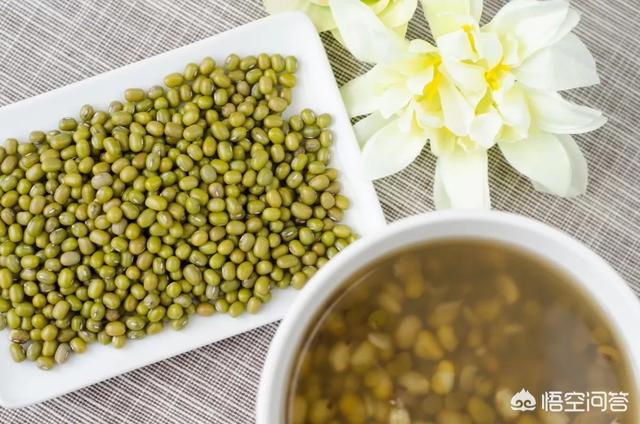
1. Staple food choices for diabetics:For diabetic patients, doctors in the diet, will suggest that the staple food needs to be coarse and fine matching, advocating eating more coarse and mixed grains, which can help lower sugar. However, there are some diabetic patients, after learning of their condition, in addition to controlling the intake of high-sugar foods, but also afraid to eat staple foods, not afraid to eat meat, not knowing that in the long run will lead to a lack of nutrients in the body, unable to meet the normal metabolism of the body, so that resistance to disease, resistance to decline, and these are for diabetic patients, is absolutely unfavorable. The correct dietary pattern should first pay attention to the staple food can not be less, staple food contained in carbohydrates, although the role of sugar, but is one of the body's essential nutrients. Staple food to eat, but to control the amount of food, but also learn to coarse and fine food with food.
Generally speaking, while controlling the total daily dietary calorie intake, the main food should account for about 55% of the daily dietary calories, in addition to ensure that there is a high-quality protein intake, control fat intake. Staple food choice is actually still mainly rice, steamed bread, to do is quantitative consumption. At the same time should be accompanied by a certain amount of coarse grains to eat, can choose coarse grains including common miscellaneous legumes, such as soybeans, mung beans, red beans, etc.; whole grains, such as brown rice, whole wheat, etc.; cereals, such as corn, oats, sorghum, buckwheat, etc.; potatoes, such as sweet potatoes, purple potatoes, yams, etc.. In fact, the main reason why we advocate eating coarse grains is that coarse grains are rich in dietary fiber, have a sense of satiety, and can delay the absorption of glucose sugar, which helps to lower sugar. It is generally recommended that patients with diabetes should be accompanied by coarse grains in their staple food, accounting for about 1/3 or so. Of course, for some patients, it is not recommended to eat too much coarse grains, such as patients with poor gastrointestinal function, elderly patients.

2. Dietary considerations for diabetics:In addition to paying attention to the staple food should be coarse and fine food mix, diabetic patients also need to pay attention to some details in the diet. A healthy dietary pattern should include, pay attention to limit the total calorie intake of the diet at the same time, to ensure balanced nutrition; pay attention to a reasonable mix of various energy ratios, carbohydrates accounted for about 55%, protein is not less than 30%, limit the fat is less than 30%; pay attention to food choices should be rich and diverse; strictly limit the intake of high-sugar food, less high-fat, high-salt food; pay attention to the reasonable distribution of the three meals, timed and rationed. You can eat more meals with less food and add more meals moderately; pay attention to adjust your diet program reasonably and arrange it according to your own condition.
Diabetic diet has always been the topic of much attention, how to better control blood sugar is every sugar lover is exploring and concerned about the problem.And I think many of you have heard the advice that it is suitable to increase the amount of roughage for diabetes, so why this advice? And how should you eat coarse grains and which coarse and mixed grains can be eaten to achieve the beneficial purpose of controlling blood sugar?These questions are at the heart of what this Q&A wants to talk to you about.
Why is it recommended that people with diabetes increase their intake of coarse grains in their staple food choices?
Coarse grains include many, such as oats, quinoa, brown rice, and corn in whole grains, legumes such as red beans, mung beans, and chickpeas, and potatoes such as potatoes and sweet potatoes all fall into the category of coarse grains.
And there are two main reasons why it is recommended for sugar lovers to add coarse grains in moderation to replace fine rice and noodles:
For one thing, roughage staples do not lower blood sugar, but they can slow down the rise in blood sugar.Because of the rich dietary fiber in coarse grains, so that the starch in the grain digestion, absorption is slower, thus making the postprandial blood glucose rise slower, and the rise in blood glucose is not in the form of dramatic fluctuations in the form of performance appears, in the long run, more conducive to the control of blood glucose.
Relevant scientific studies, on the other hand, have confirmed the benefits of coarse grains and low glycemic index staples in improving the problem of insulin resistance in diabetic patients.
Let's take an example to understand:
- Rice has a glycemic index of: 87
- The glycemic index of black rice is: 42.3
The glycemic index of black rice or black rice with rice is also lower than that of rice alone, and similarly for congee with mixed grains:
- The glycemic index of rice porridge is: 69.4
- The glycemic index of corn ballast congee is: 51.8
Secondly, most of the coarse grains will have a higher nutritional value than fine grains as opposed to fine grains.Whether it's the dietary fiber content, protein, trace minerals such as potassium and magnesium, or B vitamins, which are all very beneficial for people with diabetes.Vitamin B will promote glucose and lipid metabolism, protein and dietary fiber not only slow glycemic, but also to prevent constipation, improve immunity, a variety of micronutrients for the prevention of diabetes combined with high blood pressure has a certain benefit.
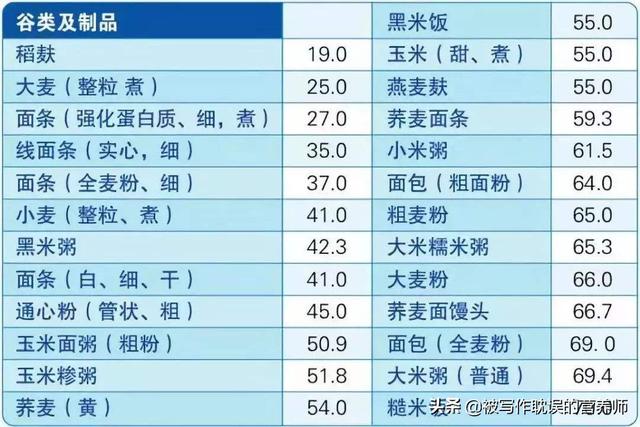
(Figure shows the glycemic index of common staple foods)
So which roughage is more recommended for diabetics?
In fact, some common coarse grains can be paired with rice to make a mixed meal, the more recommended ones are as follows:
1, a variety of beans: red beans, green beans, black beans, chickpeas and so on.
Beans because of the rich protein content, digestion and absorption will be slower, so the general glycemic index is lower, probably all in about 30, so with a variety of miscellaneous beans to do miscellaneous rice, is able to reduce the glycemic index of miscellaneous rice, is conducive to blood sugar control.
One of the more recommended is black beans because they are rich in chromium, which enhances insulin sensitivity and promotes insulin secretion.

2, whole grains: oats, sorghum rice, barley, corn, buckwheat, black rice, etc..
Using them to make mixed grain rice is less tough and more nutritious, not as low on the glycemic index as beans, but it will be lower than rice.
3. Potatoes, groundnuts, yams and other potatoes.They can also be made into a jambalaya to get more beneficial ingredients, taking care to put in less and not replacing the main meal completely.
Some of you may ask, so since roughage is good for blood sugar control, can you just eat roughage?
That's what I'm going to say below about advice and precautions, as good as mixed grains are, it's not recommended if you only eat coarse grains.
For one thing, too much roughage increases the stomach's burden and interferes with digestion.Especially for those sugar lovers with poor gastrointestinal function, this way of eating can be difficult.
Secondly, some people with diabetes suddenly switch from a low-fiber diet to a high-fiber diet in a short period of time.While leading to a range of digestive intolerances, it may also prevent energy-containing nutrients from being absorbed in a timely manner leading to hypoglycemia and unnecessary risks.
So what, it's best for sugar lovers to focus on a combination of coarse and fine.According to the recommendations in the 2017 edition of the Chinese Dietary Guidelines for Type 2 Diabetes, it is appropriate for coarse grains to make up 1/3 of the total amount of staple food, or they can be added in amounts of 50 to 75 grams per day.

((Pictured: Screenshot of staple food recommendations in the Chinese Dietary Guidelines for Type 2 Diabetes)
The advice here is not a hard and fast standard, sugar lovers still need to choose according to their body, if they seldom ate coarse grains before, then add coarse grains whenBe careful to go from little to appropriate, there is no need to change at once, to give the body and stomach a process of adaptation.
At the same time, eat coarse grains must remember to drink more water, to avoid the amount of dietary fiber in the coarse grains suddenly increase, triggering the problem of constipation, and drink more water can be very good to avoid this problem occurs.
Thanks for reading, and I hope you find it helpful.
Diabetes, currently in China, one in every 10 people, a huge number. And in recent years, diabetic patients are also relatively more important for diet therapy.

It is important for diabetic patients to control the energy intake throughout the day in their diet, with the three major nutrients distributed in appropriate proportions, and carbohydrates taking into account the Glycemic Index (GI) of each food item.GI is a physiologically meaningful indicator of the blood glucose response caused by the ingestion of food. High GI food enters the gastrointestinal digestion fast, absorption is complete, glucose quickly into the blood, while low GI food, into the stomach and intestines, stay a long time, the release is slow, glucose into the blood after the peak value is low, the rate of decline is slow.
White rice is also a major food group in weekday staples, especially for southerners, or those who prefer rice.
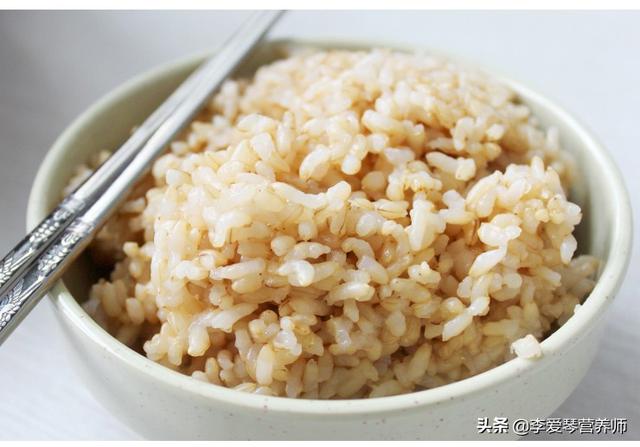
Refined white rice, as we know, has a carbohydrate content of 77.2% and a Glycemic Index GI of between 80.2-82. It's not the highest among cereals, but it's still a high GI food. The control of postprandial blood sugar will be affected. Therefore, we recommend switching to mixed grain rice, which will relatively lower the GI index and slow down the rise of postprandial blood sugar, such as.
1. Two rice, three rice
You can add brown rice, oats, barley rice, buckwheat, etc. to refined white rice to make two or three rice, and the proportion can be reduced according to the adaptability of your taste.
2. Rice and Bean Mixed Grain Rice
You can add grains such as brown rice and oats in addition to refined white rice, but also add mixed legumes such as lentils, red kidney beans, and barley at the same time. It is helpful in slowing down the rate of blood sugar after meals.
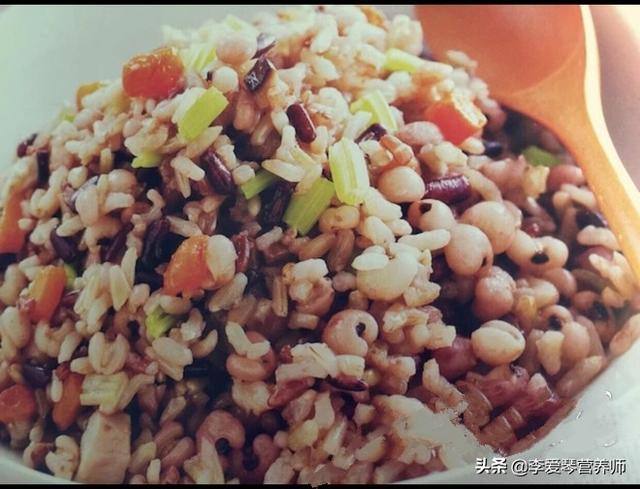
In order to slow down the rate of blood sugar rise after meals, in addition to returning the rice, you should also pay attention to.
1) Eat mixed grain rice and make sure to combine it with a variety of foods such as vegetables, lean meats and fish
2) Choose the right cooking method for food, avoid deep-frying, more steaming, boiling, stewing, mixing with cold, etc.
3) Be less salty and less oily, avoid animal oils
In addition, diabetes staple food category should also be diversified in addition to mixed grain rice, you can also do mixed grain cakes, vegetable cakes, mixed grain buns, mixed grain noodles and so on.
I'm glad to be able to talk about diabetes together, and have a better experience about which munchies and rice are better for sugar control!
Diabetic diet has always been a major concern for diabetics, and with a good diet comes good blood sugar control.And staple food is the ordinary people three meals a day of essential things, there are also many diabetics but found that the main food of the glycemic index is high, after eating staple food, blood sugar is easy to rise, so how to eat staple food for diabetics is the most difficult!
There are two diabetics in the family, tell us how our family controls the diet in treating diabetics, what are the staple foods? What kind of mixed grains and rice do we eat?
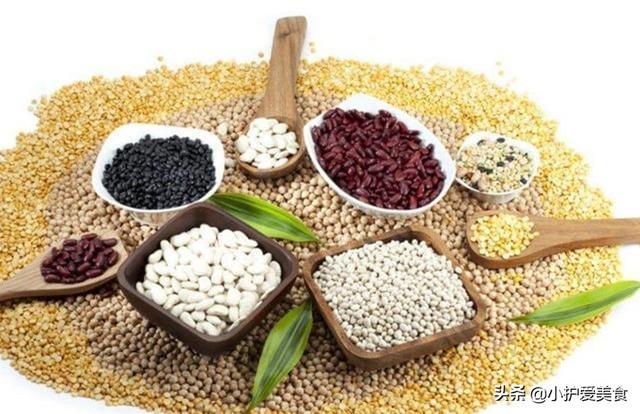
The choice of which grains to make rice is based on the glycemic index of the grains, theDiabetic patients choose staple food mainly depends on the glycemic index of the food, which is the index of the speed of blood glucose increase and blood glucose level after eating a certain kind of food, the larger the glycemic index, the higher the blood glucose level after eating, the more unfavorable to control blood glucose.Common white rice, white steamed bread glycemic index are between 80-90, is the glycemic index is relatively high food, the ability to raise blood glucose are very strong, eating after the rise in blood glucose rate is very fast, blood glucose will rise higher, are diabetic taboo.
According to the glycemic index table given by the China Nutrition Center, it can be known that eating coarse grains is beneficial for controlling blood glucose, and the following are especially recommended
black riceBlack rice has a low glycemic index, is most beneficial for diabetics to control postprandial blood sugar, and has cardiovascular benefits. Best recommended.
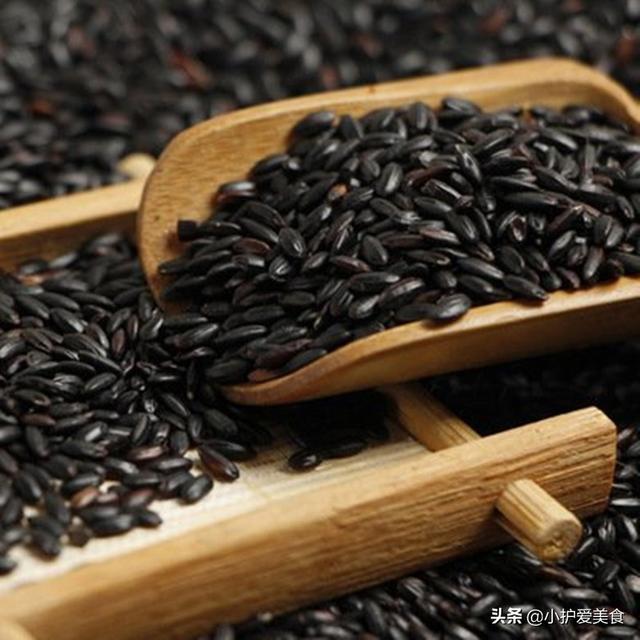
rice boiled with soy sauce and sugar, brown rice is also recommended as the best grocery grain for lowering postprandial blood glucose and is helpful in managing postprandial blood glucose.
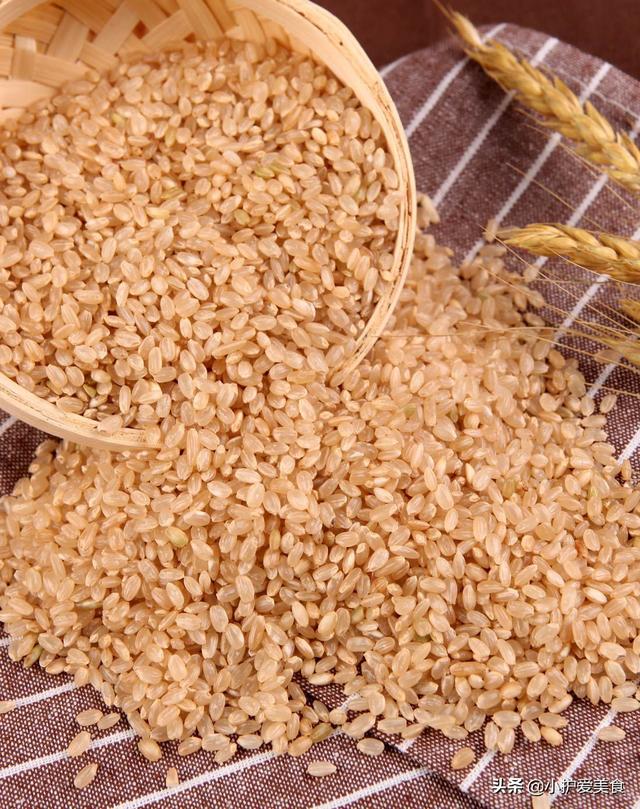
In addition to recommending these kinds of grains, let's talk about how to make it! These kinds of rice can not make rice alone, all need and rice in accordance with a certain proportion of production, and basically can not be made with a rice cooker, can only use their own iron pot, but also soak two or three hours in advance to do, recommend two production methods.
The first one cooks.That is, the northeast is often said to be fishing rice, you go into the pot to cook, cook to eight mature. Then fish out, served in a pot, and then on the pot steamed, steamed about half an hour can eat, if you do not want to steam too bad, steam fifteen minutes can be.
The second way is to stew.This method requires a certain degree of skill, or easy to string smoke, it is difficult to eat, the rice put in a pot to add water, water to be a little more, open fire, the water opened a little skimming off the water on the rice, this process to keep turning the rice until the rice rose hair, this time the pot to keep the rice above a layer of water, cover the lid, preferably glass lid, continue to heat, do not open the lid, look at the rice on the water is not, you have to turn off the fire, simmering! twenty minutes, turn off the heat and simmer for ten minutes can eat!
Hi, Sanno Speak Sugar is happy to answer your questions!
Staple food is necessary to eat every day, diabetics eat staple food has always paid attention to the "coarse and fine with less food, more meals", then, diabetics how to eat staple food it is suitable to eat what grains, coarse grains rice?
Generally speaking, mixed grain rice, coarse grains and fine grains should be in the ratio of 6:4, so as to ensure the nutrition, the impact on blood sugar is also smaller.
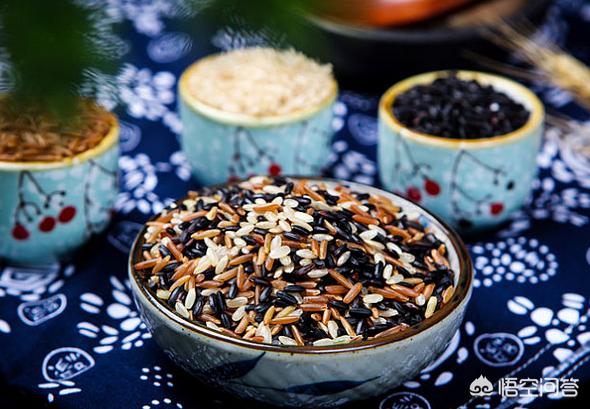
What are the best mixed grains for diabetics?
Mixed grains usually refers to rice, wheat, corn, soybeans and potatoes outside the five major crops of grain and bean crops. The main ones are: sorghum, grain, buckwheat (buckwheat, buckwheat), oats (Avena sativa), barley, millets, millet, Job's tears, seed amaranth, as well as kidney beans (kidney beans), mung beans, small beans (red beans, red beans), fava beans, peas, cowpeas, lentils (soldier beans), black beans and so on.
A wide variety of grains, diabetics can eat, if the right combination, both to meet the body's nutritional needs, but also help control postprandial blood sugar, in all kinds of grains, wheat, oats, buckwheat, millet, corn, barley, round-grained rice, etc., are more suitable for diabetic patients with grains and cereals.
How to Eat Mixed Rice with Diabetes?
1, grains of high starch content, glycemic index is generally also high, so, when eating grains of rice, must pay attention to control the amount of intake, use part of the grains of grains instead of white rice and white flour, while counting the total calories in a day.
2, pay attention to the thick and thin collocation, for example:
- Rice with some coarse grains, rice can add some buckwheat, oats, brown rice, barley, corn and other coarse grains (the best ratio of coarse and fine grains is 4:6);
- Rice with potatoes, add some sweet potatoes, taro, potatoes, purple potatoes and other potatoes to the rice as appropriate;
- Steam rice, millet, brown rice, buckwheat rice, oat rice, black beans, soybeans, red beans, and corn grits together.
Diabetics are perfectly capable of mixing and matching fine and coarse grains appropriately according to their preferences.
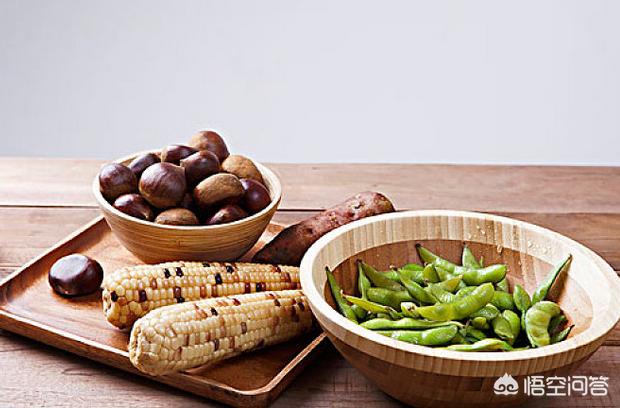
3, do not like to eat rice friends, can also be made of mixed grains into noodles or buns, such as buckwheat buns, corn nest, mixed bean buns (red bean flour, black bean flour, soybean flour, white flour steamed together), vegetable buns, etc., can be completely according to personal preference to change the taste often.
In short, diabetics can use mixed grain rice instead of rice, so that not only have a better sense of satiety, slower glycemic, less impact on blood glucose, but also to ensure that the nutrition, however, mixed grain rice as a staple food, can not eat too much can not eat too little, it is recommended that the daily staple food can not be less than 150 grams of such a minimum.
I hope my answer is useful to you! If you think it's good, please give it a nod. Welcome [attention] Sanno Speak Sugar for more health knowledge!
Thanks to the little helper for the invite.
There are still a lot of sugar friends have misunderstandings about coarse grains and miscellaneous grains, must know that coarse grains and miscellaneous grains or miscellaneous beans are not eaten to achieve the effect of lowering blood sugar, they do not have any good special ingredients can lower sugar, on the contrary, they are carbohydrate-rich foods (carbohydrates will eventually be converted into glucose), eat more of them on the impact of blood glucose is still greater. For example, there are friends asked, why every day to eat grains and cereals paste blood sugar are soaring, and even after a meal 2 children's blood sugar can not be stabilized state, grains and cereals can not lower blood sugar? Grains and cereals can really not be able to lower sugar food, they are starch-rich grain crops, and ground into powder bubble paste will make the dietary fiber thin, can not play a better delay in the effect of digestion, in turn, so that the carbohydrate decomposition faster, faster absorption, resulting in a spike in blood glucose.
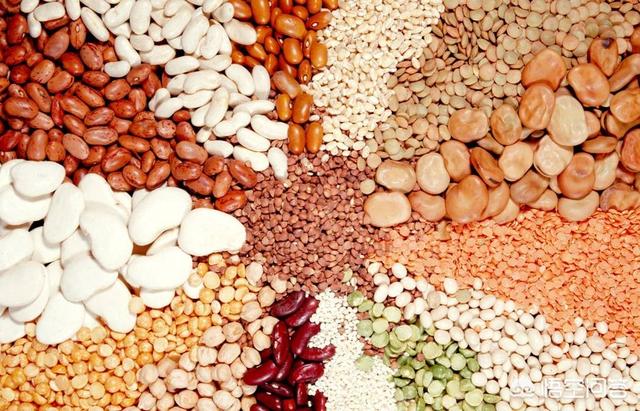
Coarse grains and miscellaneous grains, including beans, potatoes food, we are cereals and potatoes are partial staple food, this kind of food is mainly composed of carbohydrates, this is always can not be changed, so why can they help to smooth blood sugar? Because they are relative to ordinary "fine grains", retaining the bran component, dietary fiber composition is more complete, dietary fiber is not directly digested by the gastrointestinal substances, so the presence of dietary fiber can delay the speed of digestion of food, can slow down the speed of glucose absorption, so to assist in delaying the rate of increase in blood glucose is that they can do, but the final blood sugar will still rise. eventually blood sugar will still rise.
What is "fine grain"? Fine grain is actually fine processed staple foods, such as our most commonly eaten white rice, white wheat flour white buns, dumplings, chaos, white noodles, etc., these fine grains in addition to miscellaneous in the process of processing to do too fine, although the dust is less, can be corresponding to the loss of gluten ingredients, dietary fiber loss rate can be as high as 80% or more, so the digestive rate is faster, faster rise in postprandial blood glucose. But many friends did not realize the problem, perennial fine grains, the results did not want to eat eat may be high blood sugar may be, especially those who do not control the amount of eating staple foods.
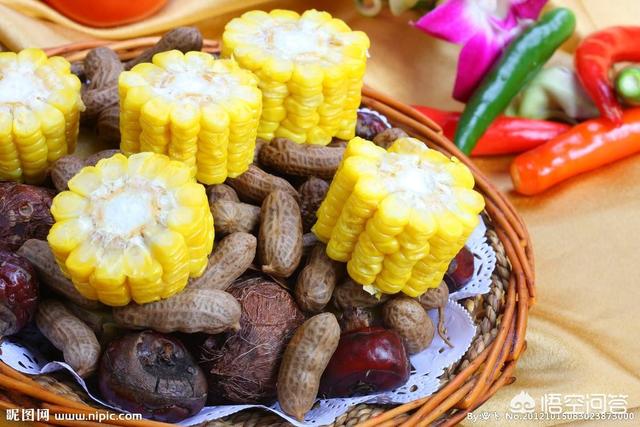
And the role of coarse grains and miscellaneous grains is here, they can be eaten together with fine grains, such as mixed than rice, we can eat red beans and rice, mung beans and rice, but also brown rice, black rice, millet, etc., so that you can increase the fine grains in the dietary fiber supplementation, but also improve the mineral intake, in fact, it's a double win, in addition to the miscellaneous grains and miscellaneous beans and coarse grains, potatoes are also good choices, potatoes do not need to be finely Processing, they are basically the ground planing out of the wash on the cuisine, retained dietary fiber is also very rich, and they are also dietary fiber-rich foods that provide adequate carbohydrates, such as potatoes, yams, sweet potatoes, and some starchy fruits and vegetables, such as corn, pumpkin and so on. So there is no need to be too concerned about what specific roughage mixtures you want to eat, as long as they are whole grain foods (bran retains more and is richer in dietary fiber) the food is optional.
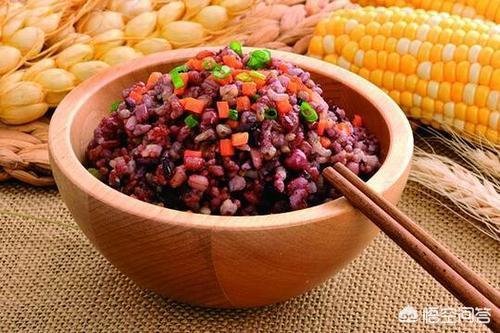
Although the addition of coarse grains and beans to help smooth blood sugar, but still should pay attention to the intake of the problem, if the intake of too much coarse grains and cereals, staple foods, and finally, the same on the smooth blood sugar is not good, the recommended intake of staple foods per meal in the two as appropriate, probably a small bowl of rice, especially for sugar, some eat a bowl but also to add a second bowl of friends should control the amount of; in addition, if the other dishes have a rich starch dishes, such as lotus root, shredded potatoes, taro, pumpkin and other foods should also be appropriate to reduce the intake of staples to achieve the effect of smooth blood glucose. In addition, if there are other dishes rich in starch, such as lotus root, shredded potatoes, taro, pumpkin and other foods should also be appropriate to reduce the intake of staple food to achieve the effect of smooth blood sugar.
Academician Zhong Nanshan shared his knowledge of diet and health at the Asian Cuisine and Health Forum.The nation is advised to replace refined rice and white flour with mixed grains and eat more of them in their daily diet.This is more relevant for diabetics.

Going back to Goku's topic, I'll talk about my personal feelings from the perspective of a 25 year sugar addict.
Produced in China's north and south of the coarse grains of many varieties, at least there are hundreds of species. However, placed on the table of the Chinese people, eat the more common there are mainly more than 20 kinds, the difference is that the name is not the same.
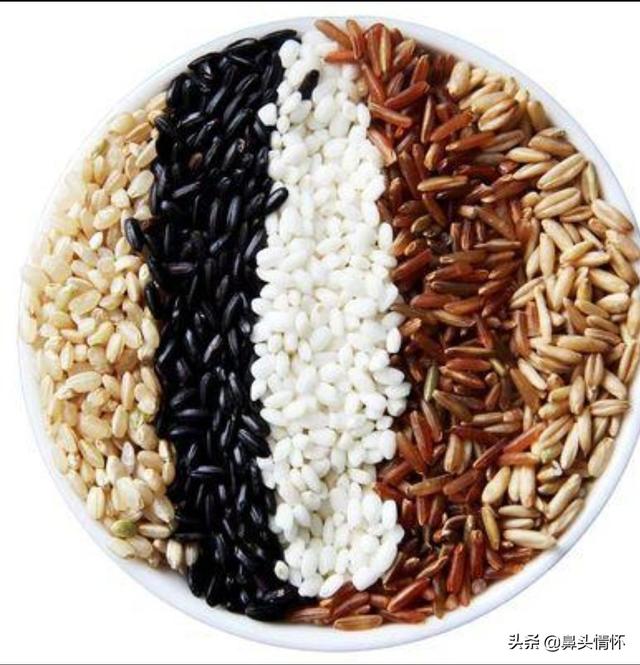
I'd like to add here that the wok I had for dinner was made from 12 kinds of mixed grains. These include: black bean flour, mung bean flour, soybean flour, yam flour, corn flour, sorghum rice flour, brown rice flour, buckwheat flour, millet flour, red bean flour, white flour, and black sesame flour. After grinding with a grinder, put the 12 kinds of flour together, stir like steamed bread, put some yeast to rise a little, and then made into a nest, steamed on the pot for 50 minutes can be cooked. Put them in the refrigerator or freeze them, and warm them up when you eat them.
Which mixed grain rice is better for blood sugar control? In my opinion, you can't make couscous rice without the above 12 ingredients either, and too many varieties won't work to make a good flavor. Making rice is differentiated from making wok, and there are 8 main types suitable for making couscous rice:One serving each of oats, sorghum rice, brown rice, black rice, millet, corn kernels, adzuki beans, mung beans, plus 5 grams of sour jujube kernels, which is often referred to as eight treasures porridge.
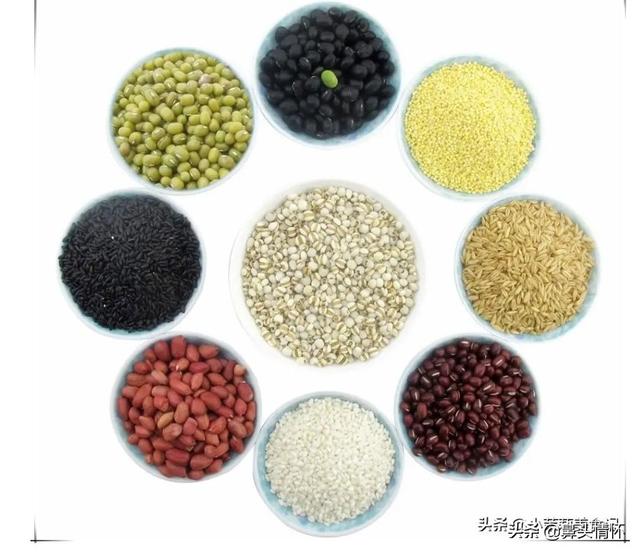
First, wash each kind of rice with water and soak it for an hour, next it is better to cook it in a pressure cooker for an hour, originally half an hour is enough, longer time, the taste of the rough rice made will be better.
Make as much as you can at a time; leftovers are relatively slow-glycemic, which helps smooth out blood sugar after meals.

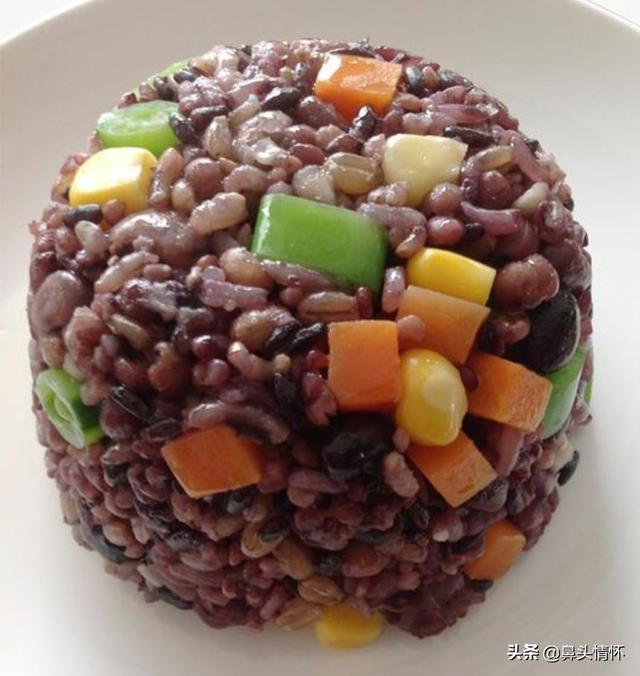
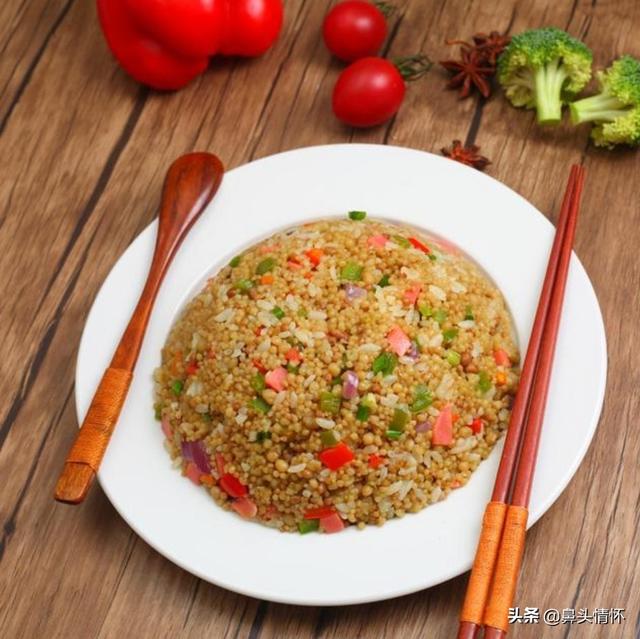
When you make mixed grain rice, you can put a little diced vegetables and sausage pieces in it, so that the combination will be more nutritious and easy to swallow.
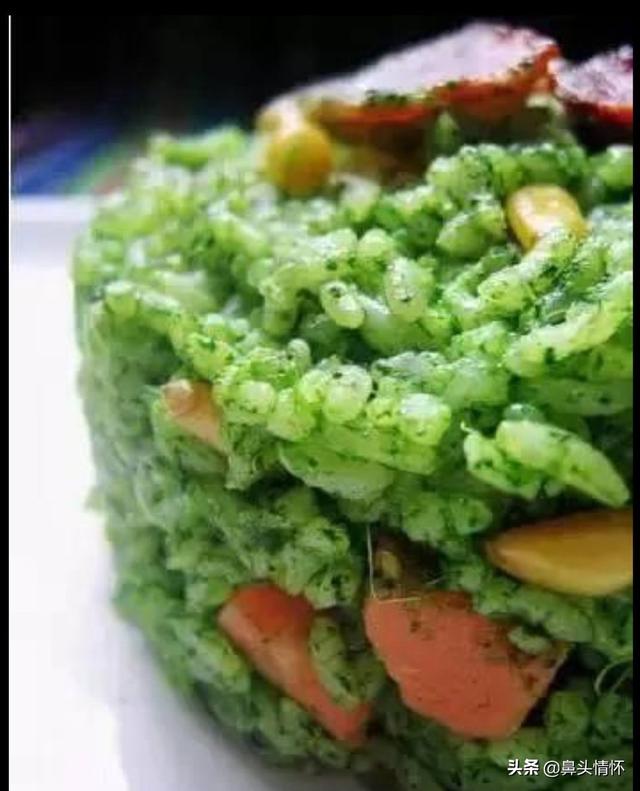
Of course, you can also have 60% of vegetables and 40% of various kinds of rice, as well-mixed as possible for good and loving food.
Lastly, I'll share that I've been eating mixed grain rice, not pretty but tasty, and more importantly, my blood sugar has been relatively stable.
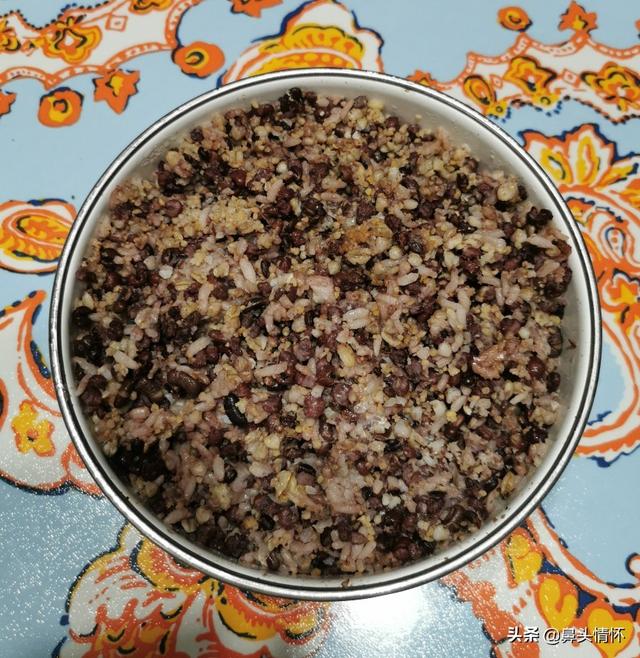
I'm Nose Emotion, specializing in nutritional health, especially for my own 26-year journey as a sugar addict, and figuring out some dietary treatments. If you are also a sugar lover or concerned about the nutritional health of diabetic patients, as far as 🉑 leave a message, together to discuss, welcome to pay attention to or forward!
Diabetics are advised to eat rice, buckwheat. Foods made from it, etc. At that time, when my father-in-law found out that his blood sugar was too high at the age of sixty, the
In the beginning, drink a little bit of two-scapula double melon, the further you go, the less control you have.
When he went to ask the doctor, he asked him how many buns he ate a day, and he said at least three big buns a day!
The doctor said, a day to eat a steamed bread, drink a glass of water is enough. It is best to eat rice, millet or buckwheat noodles, flour with low sugar content, and fruit.
When we got back, my father-in-law started eating some millet pancakes. Cornmeal nests or something!
In the fruit category eat some crunchy squash, radishes, tomatoes, cucumbers, etc!
After a couple of years, the blood sugar still went up in addition to the medication! Started injecting some drugs again.
In the days to come, father-in-law in addition to the staple food to pay attention to, in terms of vegetables, also net pick some low sugar content of vegetables, analogy, radish, cucumber, celery, winter melon, eggplant, greens and so on!
I've been doing this for ten years! I felt the pain in my left leg again! I went to the hospital and had an operation!
The doctor said it's caused by high blood sugar, and you're doing better! It's been three to five years since the surgery. My father-in-law has been suffering from diabetes his whole life!
My mother-in-law commented on my father-in-law said, is a bitter man, with diabetes a lot of good things to fish can not eat, analogous to watermelon, melon, bananas. Apples and other high sugar content of a large number of foods are not fishing to eat! Taboo!
Mixed coarse grains rice is very suitable for diabetic patients, sugar friends according to their favorite to choose on the line, such as today love to eat quinoa, tomorrow change buckwheat, the day after tomorrow want to eat red beans rice, green beans rice, a few days to eat some potatoes, purple potatoes and yams, are good, unnecessarily entangled in choosing the type of mixed coarse grains.
Why choosing a roughage meal can help a sugar addict's blood sugar?
Coarse grains, beans or whole grains, potatoes, food has a point, is the retention of dietary fiber is higher, in fact, they are also rich in carbohydrates, but compared to what we usually eat "fine grains", to blood sugar to be a lot of friendly. The so-called "fine grains", refers to the "fine processing of food", which belongs to fine grains? The scary thing is that most of the staple foods in our lives are fine grains, such as buns and steamed buns, rice, dumplings and wontons, are fine grains, which are made of finely processed rice and wheat flour, but many friends do not recognize the impact of eating fine grains on postprandial blood glucose is greater. We can use the "glycemic index" to quantify the effect of staple foods on blood glucose, glycemic index measures the degree of impact on blood glucose per unit of time of food, higher than 55 is a higher glycemic index of food, sugar friends can not eat more, and white rice glycemic index as high as 82, 83, white rice congee is higher than 100, noodles, buns, etc. Food glycemic index is not less than 80 ~ 90, the impact on blood sugar are very terrible, if the sugar friends eat these fine grains with impunity, the blood sugar is clattering straight soar.
How about coarse grains? For example, pure pressed oatmeal, ordinary quinoa, buckwheat, the glycemic index is not enough to 60, millet rice, millet porridge glycemic index is also in the 60 ~ 70, although they also do not belong to the low glycemic index of the food, but compared to the fine grains to the blood sugar to be too friendly. Potato food such as potatoes, yams glycemic index is not higher than 65, choose whole grains, coarse grains, potato food as staple food, naturally, on the postprandial blood sugar stabilization will be more favorable.
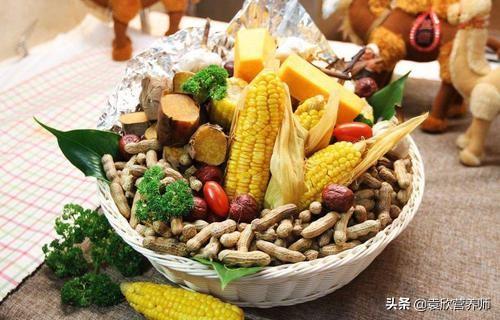
So how should you eat your roughage staples?
Staple food can be "coarse and fine combination", such as fine grain mixed with this coarse grain to eat, because some sugar friends may not have a good mouth, digestion is not good, just eat coarse grain miscellaneous food is not friendly to the stomach and intestines, but also may impede the absorption of some nutrients, so there can be fine grain in which, mixed to eat. In addition, coarse grains are indeed more friendly to blood sugar, but as mentioned earlier, they are rich in carbohydrates, and is not a low glycemic index food, so intake should also be controlled, staple foods per meal recommended 2 to 2.5 tael is appropriate, probably a full bowl of mixed grains, coarse grains, rice, or most of the bowl of mixed grains, rice, a fist-sized potatoes or two fist-sized potatoes. If there are other dishes rich in starch, such as shredded potatoes, lotus root, pumpkin, taro, etc., then the main food can also be appropriate to eat some more less. After the intake of staple foods, postprandial blood sugar is certainly to continue to rise, and may also rise faster, just relative to only eat fine grains, a little bit of blood sugar friendly, after the meal can be through a walk, light exercise to help smooth the blood glucose, not recommended to eat fruit immediately, and do not lie down immediately.
As we all know, for diabetic patients, the daily diet is very important. In particular, it is not suitable to eat the finer grains and cereals in the diet.
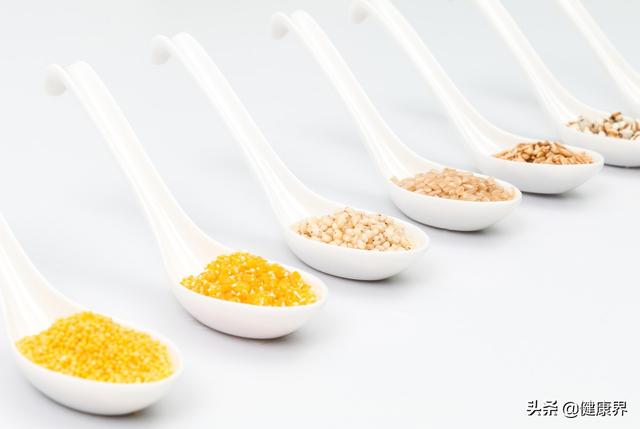
Which munchies and rice are often eaten with diabetes and are more helpful for sugar control after meals?
1. Beans and mixed grains with rice
Red beans, mung beans, black beans, chickpeas and various other beans are rich in protein and are perfect for pairing with rice. Specific beans can be added according to your preference. One of the more recommended is black beans because they are rich in chromium, which can enhance insulin sensitivity and promote insulin secretion.
2. Whole grain mixed rice
Using oats, sorghum rice, barley, barley, and black rice to make a mixed grain rice will not only not taste too hard, but will also be very nutritious.
3. Potatoes
Groundnuts, potatoes, yams, etc., can be appropriately added to rice in smaller quantities for added nutrition.
This question and answer are from the site users, does not represent the position of the site, such as infringement, please contact the administrator to delete.